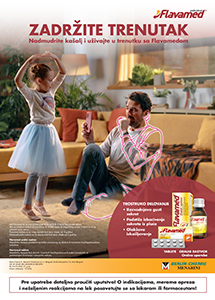IMMUNE SYSTEM IN PREGNANCY
Keywords:
immune system, pregnancy, pro-inflammatory and anti-inflammatory condition, immune clockAbstract
Introduction: Pregnant women are considered as special population group due to a change in status of the immune system caused by pregnancy. The mother's immune system plays a key role in the development of the child during pregnancy, but changes in circulating immune mediators of mother and newborn are associated with complications of pregnancy as well as susceptibility to autoimmune and neurodevelopment conditions in the child. Therefore, it is important to explore this area that presents a challenge for decision making on how to access, prevent, and treat inflammatory and infectious diseases in pregnant women, to avoid adverse outcomes for both mother and child.
Summary: There is no consensus in the literature on the understanding of the pregnant woman's immune system as a pro-inflammatory or anti-inflammatory condition. However, there is agreement in all research articles that pregnancy cannot be viewed as a single event and that in reality there are three different stages that characterize different biological and immune processes that actually symbolize how a pregnant woman feels.
The purpose of this study is to present a systematic review of available evidence-based literature, concerning the changes in adaptive and acquired immunity in pregnancy, as well as the existence of an “immune clock” that is considered crucial for seeking chronological abnormalities associated with pregnancy pathologies.
Conclusion: This study informs us about neurological changes and dysregulation during pregnancy, which can potentially lead to outcomes such as preeclampsia, intrauterine growth restriction and miscarriage.
References
Lyall K, Schmidt RJ, Hertz-Picciotto I. Environmental factors in the preconception and prenatal periods in relation to risk for ASD. In: Volkmar FR, Paul R, Rogers SJ, Pelphrey KA, editors. Handbook of autism and pervasive developmental disorders, fourth edition: assessment, interventions, policy, the future. Fourth ed. Hoboken: Wiley; 2014; 424–56.
Hsu P, Nanan RK. Innate and adaptive immune interactions at the fetal maternal interface in healthy human pregnancy and preeclampsia. Front Immunol. 2014;5:125.
Laloraya M, Padmanabhan AR. Forbearance of the Immune System during Pregnancy: Fetal Parasite Takes an Estrogenic Way Reproductive Immunol Open Acc 2016; 1:21.
Khan D, Ansar AS. The Immune System Is a Natural Target for Estrogen Action: Opposing Effects of Estrogen in Two Prototypical Autoimmune Diseases. Front Immunol 2016; 6: 635.
Aluvihare VR, Kallikourdis M, Betz AG: Regulatory T cells mediate maternal tolerance to the fetus. Nat Immunol 2004; 5:266–271.
Mor G, Straszewski-Chavez SL, Abrahams VM: Macrophage–trophoblast interactions. Methods Mol Med 2006; 122:149–163.
Wicherek L, Basta P, Pitynski K, Marianowski P, Kijowski J, Wiatr J, Majka M: The characterization of the subpopulation of suppressive B7H4(+) macrophages and the subpopulation of CD25(+) CD4(+) and FOXP3(+) regulatory T-cells in decidua during the secretory cycle phase, Arias Stella reaction, and spontaneous abortion – a preliminary report. Am J ReprodImmunol 2009; 61:303–312.
Greenwood JD, Minhas K, di Santo JP, Makita M, Kiso Y, Croy BA: Ultrastructural studies of implantation sites from mice deficient in uterine natural killer cells. Placenta 2000; 21:693–702.
Le Bouteiller P, Piccinni MP: Human NK cells in pregnant uterus: why there? Am J Reprod Immunol 2008; 59:401–406.
Wegmann T: Fetal protection against abortion: is it immunosupression or immunostimulation? Ann Immunol 1984; 135D:309–312.
11.Szekeres-Bartho J, Wegmann TG: A progesterone dependent immunomodulatory protein alters the Th1 ⁄ Th2 balance. J ReprodImmunol 1996; 31:81–95.
Wegmann TG, Lin H, Guilbert L, Mosmann TR: Bidirectional cytokine interactions in the maternalfetal relationship: is successful pregnancy a TH2 phenomenon? Immunol Today 1993; 14:353–356.
Saito S, Miyazaki S, Sasaki Y: Th1 ⁄ Th2 Balance of the Implantation Site in Humans. Georgetown, TX, Landes Bioscience ⁄ Springer Science, 2006.
Mor G: Pregnancy reconceived. Nat Hist 2007; 116:36–41.
Mor G, Koga K: Macrophages and pregnancy. Reprod Sci 2008; 15:435–436.
16 Mor G, Abrahams V: Immunology of implantation. In Immunology and Allergy Clinics, A Arici (ed). Philadelphia, W.B. Saunders Company, 2002, pp 545– 565.
Romero R, Espinoza J, Kusanovic JP, Gotsch F, Hassan S, Erez O, Chaiworapongsa T, Mazor M: The preterm parturition syndrome. BJOG 2006; 113(Suppl. 3):17–42.
Romero R, Espinoza J, Goncalves LF, Kusanovic JP, Friel LA, Nien JK: Inflammation in preterm and term labour and delivery. Semin Fetal Neonatal Med 2006; 11:317–326.
Romero R: Novel aspects of neutrophil biology in human pregnancy. Am J Reprod Immunol 2005; 53:275.
Mor G: Inflammation and pregnancy: the role of toll like receptors in trophoblast-immune interaction. Ann N Y Acad Sci 2008; 1127:121–128.
Laresgoiti-Servitje E. A leading role for the immune system in the pathophysiology of preeclampsia. J Leukoc Biol. 2013; 94(2):247-57.
Robertson SA. Seminal plasma and male factor signalling in the female reproductive tract. Cell Tissue Res 2005; 322:43–52.
Filipović, I., Filipović, Đ. 2010, "Fetus kao alograft", Naučni časopis urgentne medicine - Halo 94, vol. 16, no. 3, pp. 126-130.
Prabhu Das M, Bonney E, Caron K, Dey S, Erlebacher A, Fazleabas A, Fisher S, et al. Immune mechanisms at the maternal-fetal interface: Perspectives and challenges. Nat. Immunol 2015; 16, 328–334.
.Romero R, Dey SK, Fisher SJ. Preterm labor: One syndrome, many causes. Science 2014; 345, 760–765.
Arck PC,Hecher K. Fetomaternal immune cross-talk and its consequences for maternal and off spring’s health. Nat. Med 2013; 99, 548–556.
Aghaeepour, N. et al. An immune clock of human pregnancy. Sci. Immunol 2017; 2: 2946.
Kay AW, Fukuyama J, Aziz N, Dekker CL, Mackey S, Swan GE,Davis MM, Holmes S, Blish CA. Enhanced natural killer-cell and T-cell responses to influenza A virus during pregnancy. Proc Natl Acad Sci U.S.A.2014; 111:14506–14511.
Le Gars M, Kay AW, Bayless NL, Aziz N, Dekker CL, Swan GE, Davis MM, Blish CA. Increased proinflammatory responses of monocytes and plasmacytoid dendritic cells to influenza A virus infection during pregnancy. J Infect Dis 2016; 214, 1666–1671.





